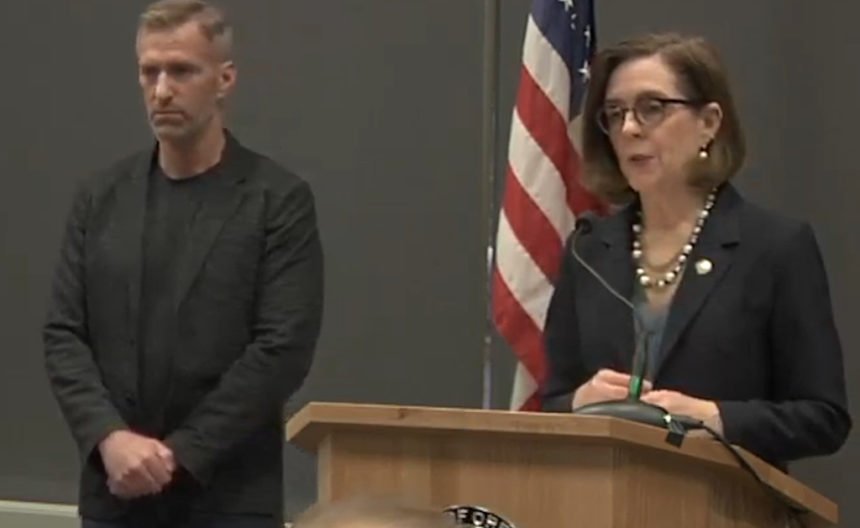Gov. Brown to outline framework for ‘reopening Oregon’ on Tuesday

Elective surgeries, procedures could resume; news conference to be livestreamed at 11 a.m.
SALEM, Ore. (KTVZ) -- Hours after the three West Coast governors agreed to coordinate a recovery path from COVID-19, Oregon Gov. Kate Brown said Monday she will held a news conference Tuesday to introduce "her framework for Reopening Oregon."
She will be joined by representatives from the Oregon Health Authority and the Governor's Medical Advisory Panel. A livestream will be available for members of the public here.
A spokesman for the governor told KGW that elective surgeries and procedures will be one of the areas the state looks at reopening.
He also said when a state restriction is loosened, it will be studied for two weeks, to make sure there is no rise in coronavirus cases.
But the spokesman said Brown won't adopt a federal proposal to wait two weeks without a COVID-19 death in the state. Instead, she will watch for falling numbers of cases and hospitalizations.
Brown is asking leaders in business, health care and other fields to weigh in on her proposals.
Brown joined California Governor Gavin Newsom and Washington Governor Jay Inslee in announcing an agreement Monday on a shared vision for reopening their economies and controlling COVID-19 into the future.
Newsom also said he will announce on Tuesday a detailed plan for lifting coronavirus restrictions.
Here's the joint statement from the governors:
COVID-19 has preyed upon our interconnectedness. In the coming weeks, the West Coast will flip the script on COVID-19 – with our states acting in close coordination and collaboration to ensure the virus can never spread wildly in our communities.
We are announcing that California, Oregon and Washington have agreed to work together on a shared approach for reopening our economies – one that identifies clear indicators for communities to restart public life and business.
While each state is building a state-specific plan, our states have agreed to the following principles as we build out a West Coast framework:
Our residents’ health comes first. As home to one in six Americans and gateway to the rest of the world, the West Coast has an outsized stake in controlling and ultimately defeating COVID-19.
Health outcomes and science – not politics – will guide these decisions. Modifications to our states’ stay at home orders must be made based off our understanding of the total health impacts of COVID-19, including: the direct impact of the disease on our communities; the health impact of measures introduced to control the spread in communities—particularly felt by those already experiencing social disadvantage prior to COVID-19; and our health care systems’ ability to ensure care for those who may become sick with COVID-19 and other conditions. This effort will be guided by data. We need to see a decline in the rate of spread of the virus before large-scale reopening, and we will be working in coordination to identify the best metrics to guide this.
Our states will only be effective by working together. Each state will work with its local leaders and communities within its borders to understand what’s happening on the ground and adhere to our agreed upon approach.
Through quick and decisive action, each of our states has made significant progress in flattening the curve and slowing the spread of COVID-19 among the broader public. Now, our public health leaders will focus on four goals that will be critical for controlling the virus in the future.
- Protecting vulnerable populations at risk for severe disease if infected. This includes a concerted effort to prevent and fight outbreaks in nursing homes and other long-term care facilities.
- Ensuring an ability to care for those who may become sick with COVID-19 and other conditions. This will require adequate hospital surge capacity and supplies of personal protective equipment.
- Mitigating the non-direct COVID-19 health impacts, particularly on disadvantaged communities.
- Protecting the general public by ensuring any successful lifting of interventions includes the development of a system for testing, tracking and isolating. The states will work together to share best practices.
COVID-19 doesn’t follow state or national boundaries. It will take every level of government, working together, and a full picture of what’s happening on the ground.
In the coming days, the governors, their staff and health officials will continue conversations about this regional path to recovery.